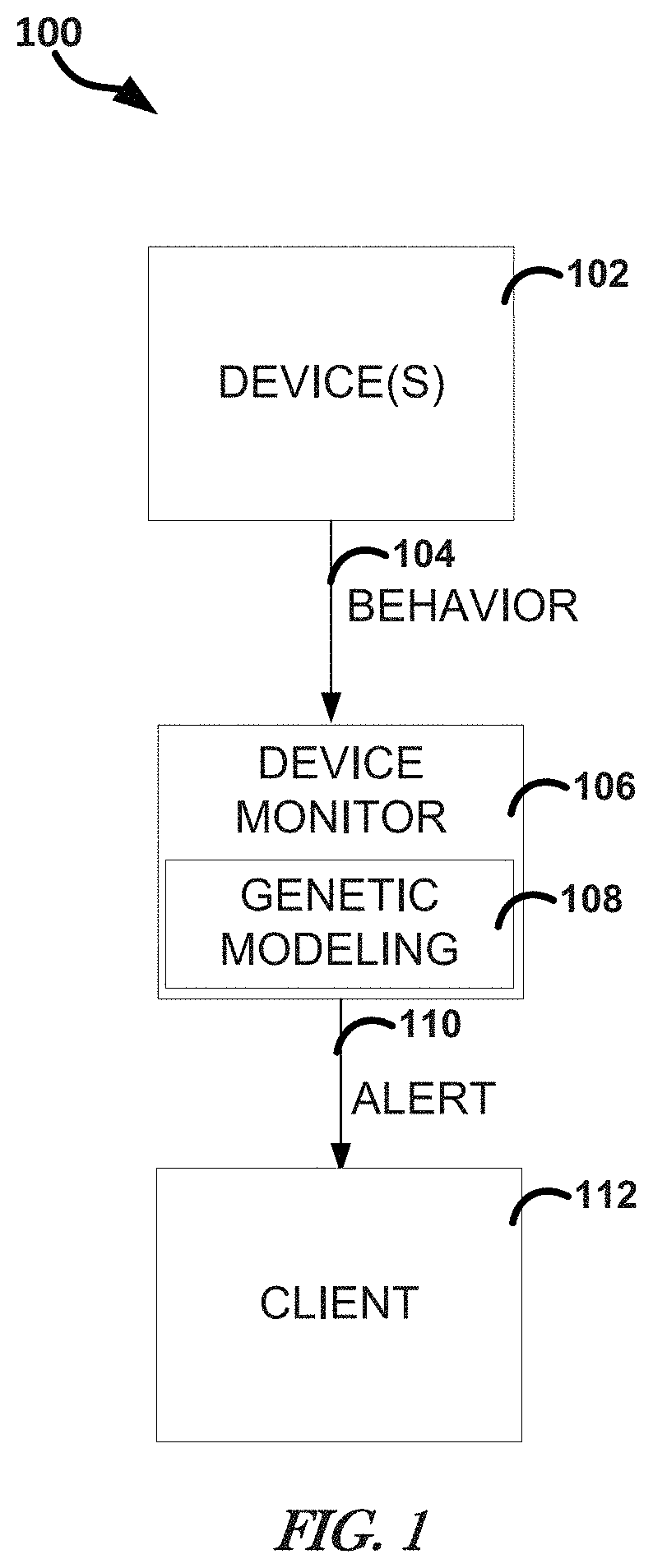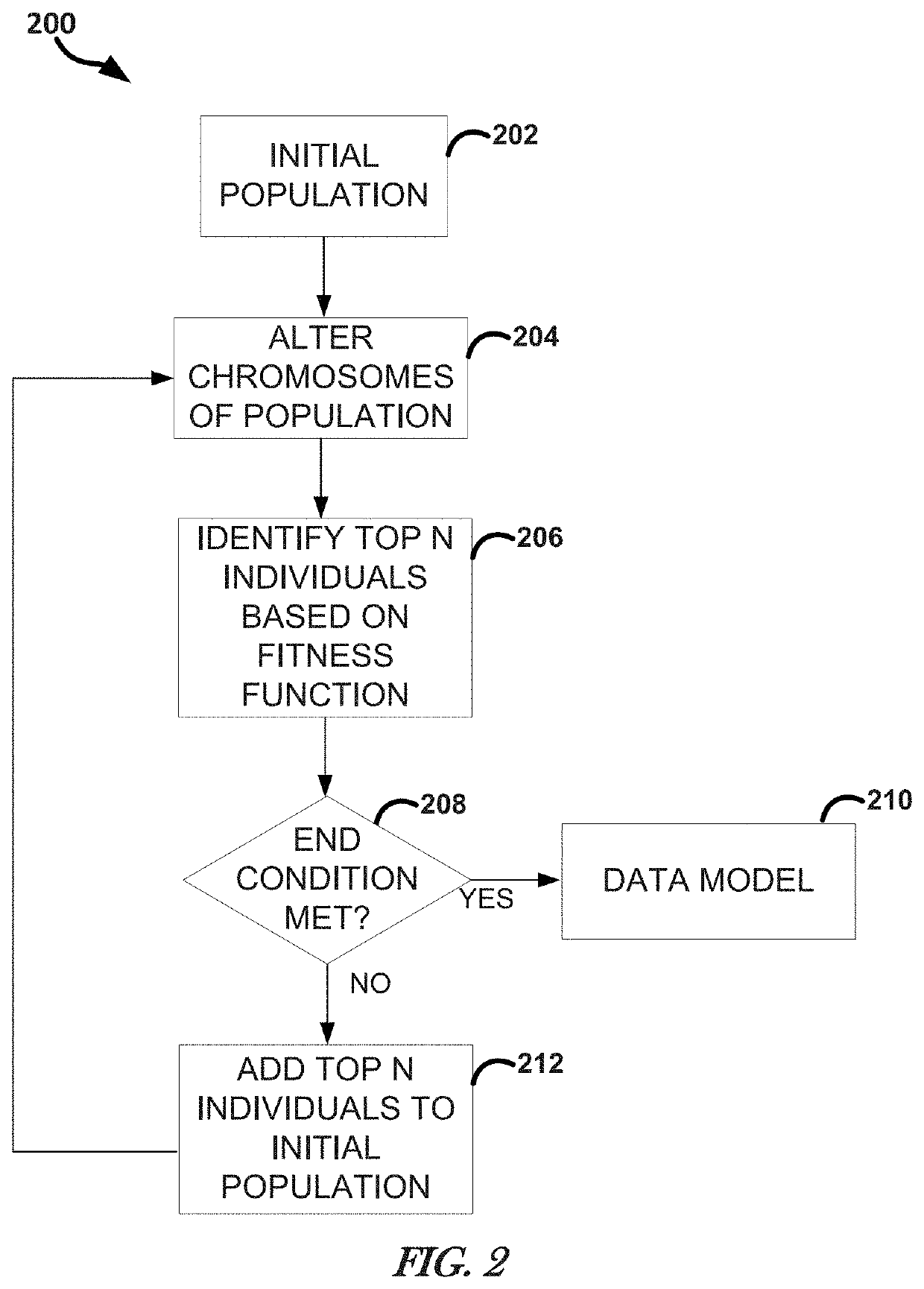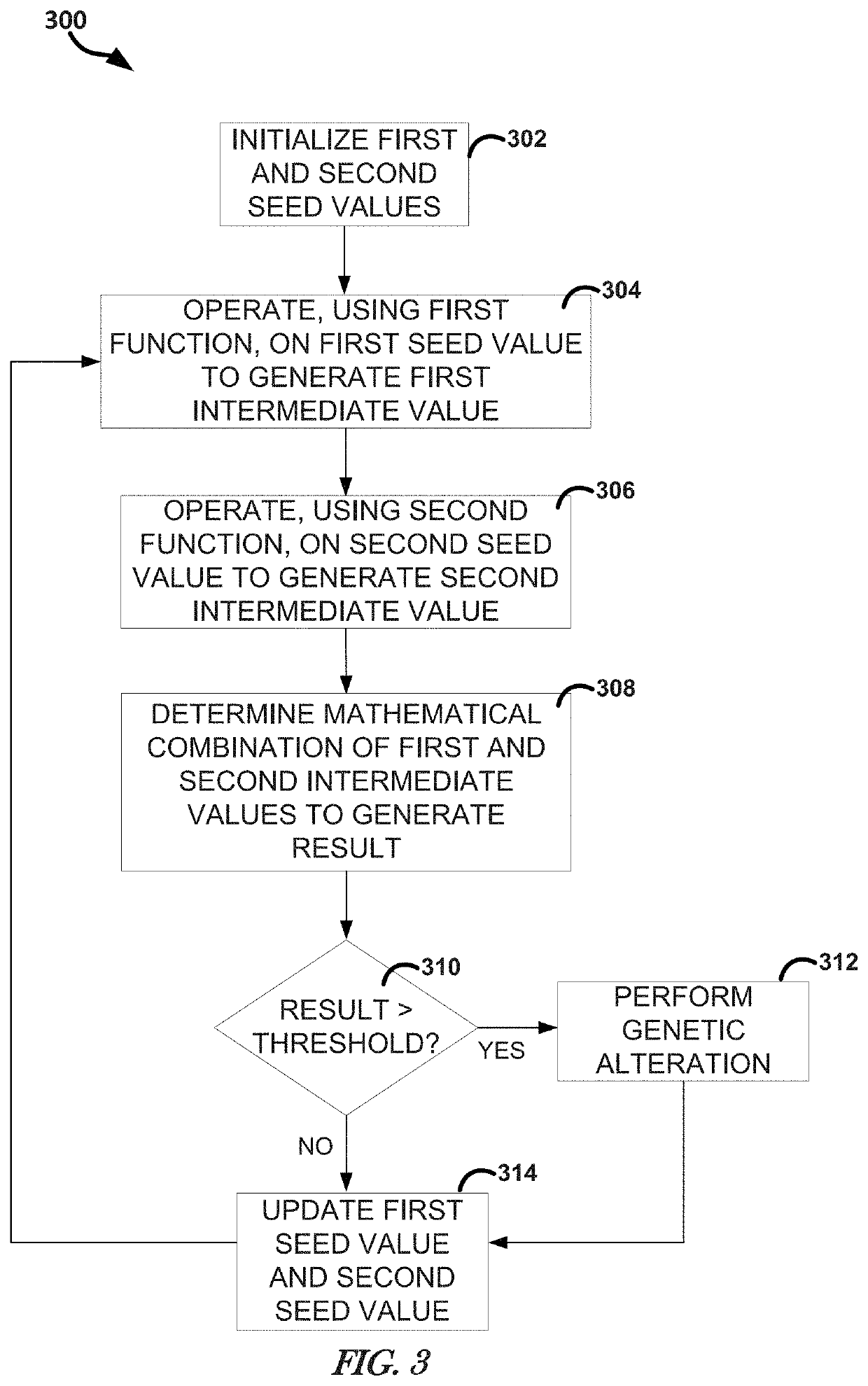Gene expression programming
a gene expression and programming technology, applied in the field of behavior monitoring, can solve problems such as difficult prediction, difficult modeling of system state, and current data modeling solutions that are woefully incapable of modeling complex system behavior
- Summary
- Abstract
- Description
- Claims
- Application Information
AI Technical Summary
Benefits of technology
Problems solved by technology
Method used
Image
Examples
Embodiment Construction
[0026]The following description and the drawings sufficiently illustrate specific embodiments to enable those skilled in the art to practice them. Other embodiments may incorporate structural, logical, electrical, process, and other changes. Portions and features of some embodiments may be included in, or substituted for, those of other embodiments. Embodiments set forth in the claims encompass all available equivalents of those claims.
[0027]Embodiments can include behavior analysis (e.g., anomalous or malicious behavior detection) using GEP. In GEP, a set of chromosomes forms a genome. The chromosomes are subject to alterations, such as by mutation, transposition, recombination, or a combination thereof In general, GEP takes a population of individuals as input, alters one or more of the individuals and adds the modified individual to the population, and selects individuals based on a fitness function for a next generation. GEP, as used herein, can include a genetic algorithm, gene...
PUM
 Login to View More
Login to View More Abstract
Description
Claims
Application Information
 Login to View More
Login to View More - R&D
- Intellectual Property
- Life Sciences
- Materials
- Tech Scout
- Unparalleled Data Quality
- Higher Quality Content
- 60% Fewer Hallucinations
Browse by: Latest US Patents, China's latest patents, Technical Efficacy Thesaurus, Application Domain, Technology Topic, Popular Technical Reports.
© 2025 PatSnap. All rights reserved.Legal|Privacy policy|Modern Slavery Act Transparency Statement|Sitemap|About US| Contact US: help@patsnap.com



